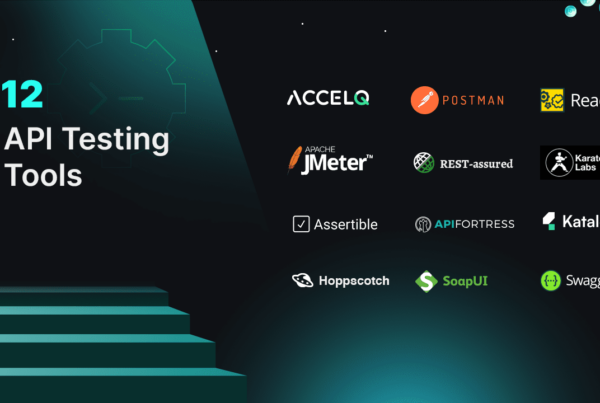API Performance Monitoring: A Complete Guide with UI Insights

Performance is one of the first things end users notice. A sluggish app or delayed API response can frustrate customers, raise support costs, and ultimately hit revenue. That’s why API performance monitoring has become a must-have discipline in software delivery pipelines.
You can think of it as a subset of broader API monitoring, focused specifically on latency, throughput, error rates, and how those metrics affect user experience. While load and stress testing still matter, the real gains come from observing performance early, during everyday UI and API test runs.
This guide explains how to monitor API performance effectively, where UI testing fits into the story, and what benchmarks you should aim for.
- What Is Application and API Performance Monitoring?
- API Performance Monitoring Tools
- How to Monitor API Performance?
- Protocol Specifics: REST and Web API Performance Monitoring
- UI & API Performance Monitoring
- API Performance Benchmarks
- API Response Time Standards
- Why ACCELQ for API Performance Monitoring?
- Conclusion
What Is Application and API Performance Monitoring?
Application performance monitoring (APM) is the practice of tracking how an application behaves under real or simulated usage. It spans front-end experiences, network hops, backend logic, and, increasingly, APIs.
API performance monitoring narrows in on the interfaces that power digital systems. It answers questions like:
- Are login and payment endpoints responding within agreed SLOs?
- What is the average and p95 response time for search queries?
- How often do APIs fail due to timeouts or dependency issues?
Done right, it prevents slow endpoints from slipping into production, saving QA and DevOps teams time, effort, and late-night firefighting.
SUGGESTED READ - Understanding API Virtualization
API Performance Monitoring Tools
Plenty of API performance monitoring tools exist today, from open source options to enterprise SaaS platforms. The key is knowing what features really matter.
Here’s a quick comparison matrix:
| Feature | Why It Matters | Typical Coverage |
|---|---|---|
| Protocol Support | REST, GraphQL, SOAP, gRPC | REST & JSON most common |
| Metrics Tracked | Latency, throughput, error %, saturation | Latency p95/p99 |
| Alerting | Threshold, anomaly, SLO breaches | Email, Slack, PagerDuty |
| Synthetic Monitoring | Active checks to simulate users | Global POPs, browsers |
| Real User Monitoring (RUM) | Passive checks from real traffic | Session replay, UX KPIs |
| CI/CD Hooks | Block builds if performance fails | Jenkins, GitHub Actions |
| Pricing | Ranges from open source to enterprise licenses | Usage-based |
Most QA teams blend a monitoring tool with their test automation framework. Platforms like ACCELQ integrate API and UI performance checks directly into regression suites, reducing overhead.
How to Monitor API Performance?
So how do you actually track and act on API metrics? Here’s a simple sequence:
- Instrument – Capture response time, error codes, payload size.
- Choose KPIs – Latency (p95), error rate (<1%), throughput (RPS).
- Baseline – Establish typical values under normal load.
- Monitor – Run synthetic and functional tests continuously.
- Alert – Set thresholds so SRE/QA gets notified before customers do.
- Review – Trend data over weeks to spot regressions.
This approach works equally for REST API monitoring and more modern GraphQL/gRPC endpoints.
Protocol Specifics: REST and Web API Performance Monitoring
REST API Monitoring
REST remains the most common style, so REST API monitoring focuses on HTTP specifics:
- Status codes (200/400/500) distribution
- Header sizes and caching behavior
- Payload weight (JSON vs compressed)
- Pagination response times
Web API Performance Monitoring
On the client side, web API performance monitoring adds browser context:
- CORS preflight and caching delays
- CDN edge latency
- TLS handshake times
- How API calls impact Core Web Vitals
UI & API Performance Monitoring
Performance isn’t only about APIs. The front end is where users feel the impact. That’s why combining UI & API performance monitoring is powerful.
| Layer | What to Track | Example Metrics |
|---|---|---|
| UI Performance Testing | Page load, render times, user flow steps | LCP, TTI, Time to Interact |
| API Performance Testing | Endpoint health, dependency latency | p95 response ≤ 300ms |
A single user journey, like checking out an e-commerce cart, can be validated both through UI rendering and the APIs behind add-to-cart, pricing, and payment.
SUGGESTED READ - Mobile App Testing Guide
UI Performance Testing
UI performance testing ensures that core user flows remain fast and functional:
- Validate login and navigation speed across devices.
- Benchmark different browsers for consistency.
- Catch layout shifts or delayed renders.
- Run parallel checks across platforms.
ACCELQ’s low-code UI automation lets QA run these tests at scale without scripting overhead.
API Performance Testing
API performance testing differs from monitoring because it simulates load in pre-production:
- Ramp traffic gradually to find breaking points.
- Validate SLA gates (p95 ≤ 400ms, error rate < 1%).
- Run smoke tests per commit in CI pipelines.
With ACCELQ Autopilot, API regression testing runs 3x faster with ~70% less maintenance, leaving QA free to focus on strategy.
API Performance Benchmarks
There’s no single global number, but benchmarks give useful direction.
| Endpoint Type | p50 Target | p95 Target | p99 Target |
|---|---|---|---|
| Auth/Login | 100ms | 300ms | 500ms |
| Search/List | 200ms | 400ms | 800ms |
| Write/Update | 250ms | 500ms | 900ms |
Note: Benchmarks vary by domain. Financial systems may have stricter p95 targets, while media apps tolerate more latency.
API Response Time Standards
Here’s the thing: API response time standards are guidelines, not absolutes. Still, many teams follow these rules of thumb:
- p95 ≤ 300–500ms for read-heavy public APIs
- p95 ≤ 500–800ms for transactional APIs
- p99 ≤ 1s for complex workflows
🔄 Transform Your QA Strategy
Unify Testing Across Web, Mobile, API & Desktop
Explore Now
What matters is defining clear SLOs, then monitoring and testing against them consistently.
Why ACCELQ for API Performance Monitoring?
ACCELQ isn’t just another automation tool. It unifies UI and API performance testing under one codeless, cloud-native platform.
- AI-driven change management keeps tests stable.
- Autopilot generates and self-heals API test cases.
- Unified dashboard for performance metrics across UI and API.
- Native DevOps hooks with Jira, Jenkins, Bamboo.
The result? Earlier detection of performance regressions, faster test cycles, and measurable cost savings.
Conclusion
Performance bottlenecks often hide in plain sight, showing up as sluggish APIs or clunky UIs. With structured API performance monitoring, combined with UI checks, teams can catch these issues before they hit production.
Tools matter, but so does approach. Define baselines, run continuous checks, and compare against clear benchmarks. Platforms like ACCELQ make this practical by weaving API and UI monitoring directly into automation suites, without adding coding overhead.
When you connect performance monitoring with everyday QA workflows, quality becomes everyone’s responsibility, and end users stay happy.
Geosley Andrades
Director, Product Evangelist at ACCELQ
Geosley is a Test Automation Evangelist and Community builder at ACCELQ. Being passionate about continuous learning, Geosley helps ACCELQ with innovative solutions to transform test automation to be simpler, more reliable, and sustainable for the real world.
You Might Also Like:
 ACCELQ API Test Automation
ACCELQ API Test Automation
ACCELQ API Test Automation
 What is a REST API?
What is a REST API?
What is a REST API?
 12 Best API Testing Tools
12 Best API Testing Tools

































